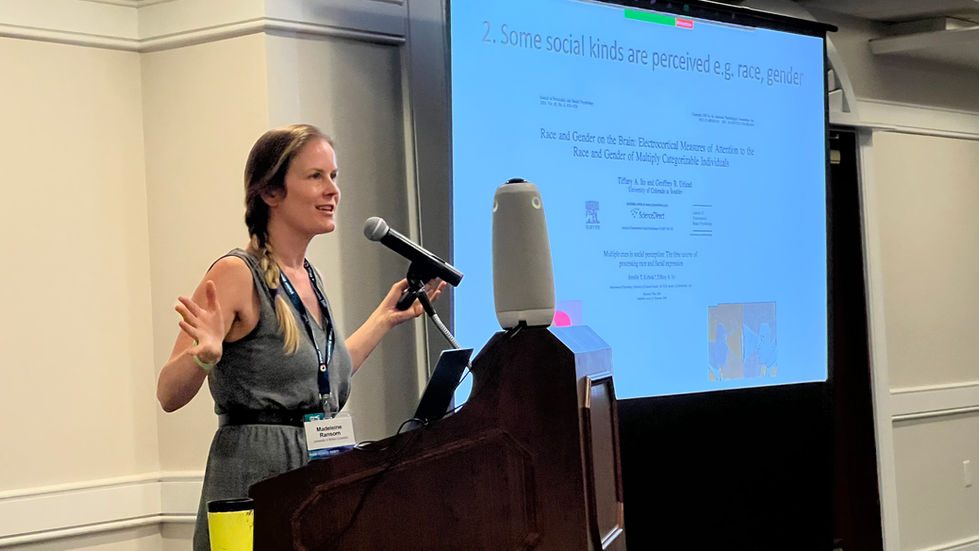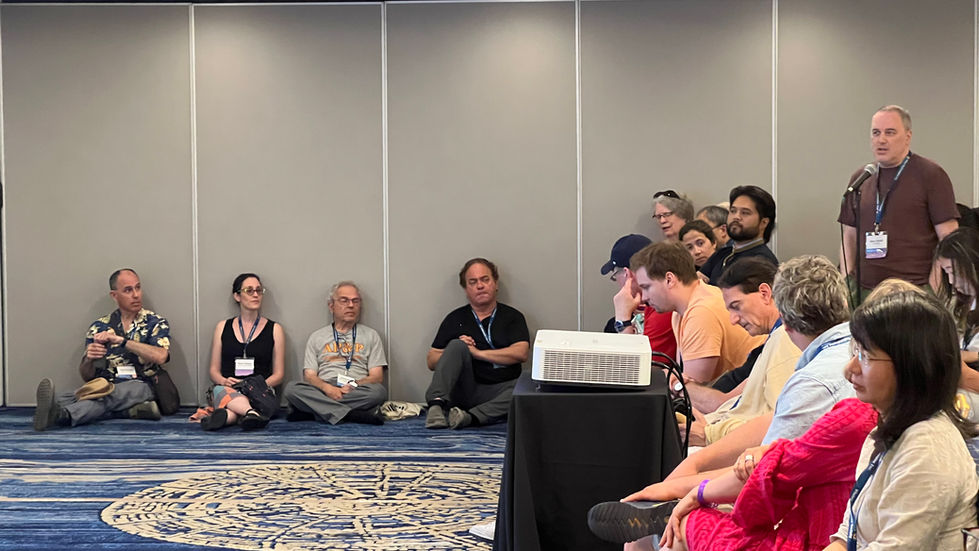
Organizers
This event is supported by York University’s Department of Philosophy, Vision: Science to Applications (VISTA) program, and Centre for Vision Research, and by Johns Hopkins University's William H. Miller III Department of Philosophy and Vision Sciences Group.
The past decade has seen a resurgence of interest in the intersection between vision science and the philosophy of perception. But opportunities for conversation between vision scientists and philosophers are still hard to come by. The phiVis workshop is a forum for promoting and expanding this interdisciplinary dialogue. Philosophers of perception can capitalize on the experimental knowledge of working vision scientists, while vision scientists can take advantage of the opportunity to connect their research to long-standing philosophical questions. Short talks by philosophers of perception that engage with the latest research in vision science will be followed by discussion with a slate of vision scientists, on topics such as probabilistic representation in perception, perceptual constancy, amodal completion, multisensory perception, visual adaptation, and much more.
aboutus

Schedule
Chair: Jorge Morales (Northwestern)
12:30PM
Opening remarks
- Kevin Lande (York University)
- Chaz Firestone (Johns Hopkins)
- Jorge Morales (Northeastern)
12:35PM
Jake Quilty-Dunn (WashU - St. Louis) | Varieties of Feature Composition
There is something irresistible about the idea that we visually perceive the world by means of images. Images represent information holistically, as when a single region of a picture encodes hue, saturation, brightness, two or three dimensions of spatial position, and perhaps other features like orientation and size. These features are represented as a package, without discrete constituents for each property. However, standard models of visual perception in philosophy, psychology, and neuroscience deny that visual perception is imagistic in this sense. Instead, vision is often thought of as an assembly line: each feature is detected separately in parallel and stitched together in a final binding operation before being shipped out to “consumers” like cognition, action, and conscious awareness. This talk argues that this assembly-line picture captures only one form of feature composition: binding features into object files, which make feature conjunctions available for explicit decision and verbal report. The visual system also separately constructs icons, imagistic representations that compose features holistically. There is no one visual “percept”, but rather a variety of outputs of visual processing that obey distinct compositional principles and perform distinct functions. Vision—like the mind more generally—is redundant and pluralistic.
- Comments from Yaoda Xu (Yale)
- Q&A
1:10PM
Madeleine Ransom (UBC - Okanagan) | The Perceptual Learning Of Socially Constructed Kinds
Some social kinds are both socially constructed and perceptible, such as MONEY, GENDER and – as I will focus on here – RACE. However, this gives rise to a puzzle: how does culture shape and bias what we perceive? I argue that perceptual learning is the best explanation of our ability to perceive social kinds. Drawing upon known factors that influence perceptual learning, I propose four ways in which culture can shape and bias perception. This account makes clear that the process of enculturation can begin at a very early age, and does not in most cases require background knowledge on the part of the learner: the causal pathways by which perceptual learning occur suffice. In addition – and crucial for understanding the persistence of racism despite a decline in racist attitudes – it can help explain how certain cultural practices become entrenched in a society: by ‘anchoring’ the social kind in perception.
- Comments from Isabel Gauthier (Vanderbilt)
- Q&A
1:45PM
Wayne Wu (Carnegie Mellon) | We Know What Attention Is!
I will argue that we know what attention is. Further we are committed to this conception because we are committed to the same experimental methodology for attention. I argue by deduction that the theory of attention is internally inconsistent or equivocates, two logical vices we should avoid. The logical problem in our theory, and thus the failure to capture biological joints, is obscured because the issue about attention is too often posed as a problem about language, namely about the failure to define a word or to agree on linguistic usage. Instead, the deep issue is whether our theories capture real distinctions in biology. Theoretical adequacy requires logical coherence. Fortunately, to deal with the logical issues, we can appeal to shared a methodological commitment: attention is, as James noted, selection of information for further processing for the guidance of behavior. I provide arguments that show that we are all committed to this answer because we are committed to the same experimental paradigms. Thus, my goal is not to convince us to accept the Jamesian account, since we already do, but to show its theoretical power. The Jamesian conception is an axiom in neuropsychological explanation of attention that imposes unity on different levels of analysis. Specifically, attention is not an explainer, but what we are trying to explain.














